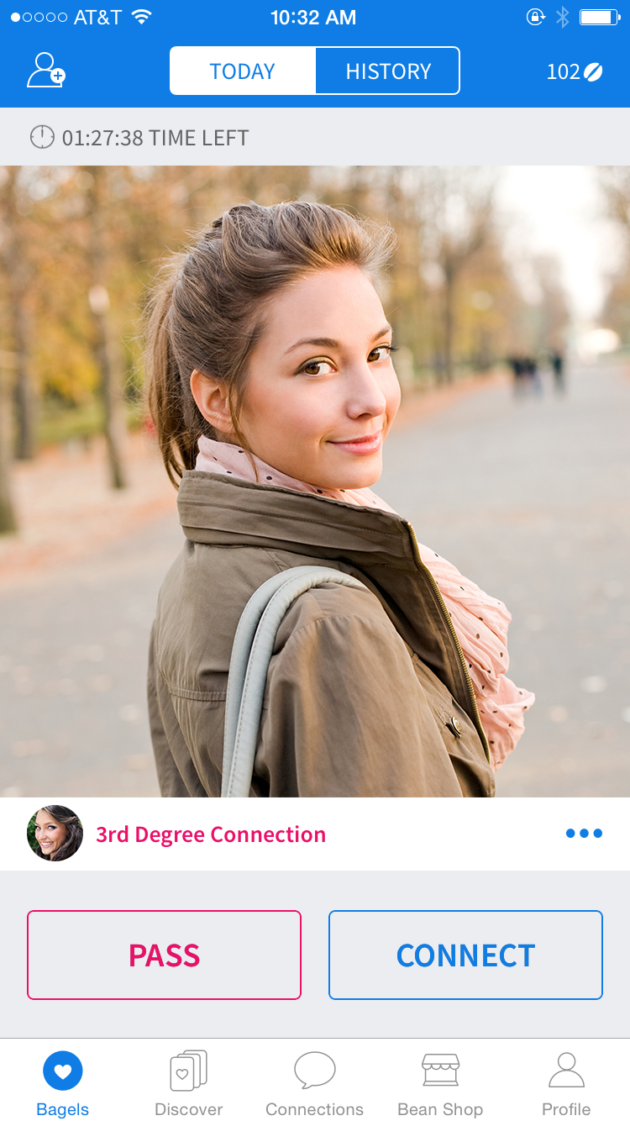
Ask someone in Seattle about the dating scene, and you’re bound to get some emotional responses. They might bring up the “Seattle Freeze,” a chill that some describe as “a superficial friendliness that greets newcomers,” or when “girls lead you on for weeks and snub you with no explanation.” Others will blame Amazon for the uneven male-to-female ratio. And many will say it’s perfectly fine.

It’s Valentine’s Day, so we wanted to learn more about Seattle’s dating scene with the help of technology. Coffee Meets Bagel (CMB), the dating app startup that turned down a $30 million deal on Shark Tank and has raised more than $10 million, lifted the hood for GeekWire on some of its internal data about Seattle-based user habits from January 2017.
CMB isn’t nearly as widely-used as Tinder — see some data from that app below — but still carries a 4-star review with more than 23,000 downloads. The company’s strategy is to give male users 21 “Bagels,” or potential matches, per day, and then show female users a curated list of men who already liked them.
“With #LadiesChoice, we are giving women more control of their dating experience,” the site’s homepage reads. “We are enabling them to re-focus their time and energy on men who are serious about taking the next step. We are hoping to inspire all singles around the world to feel good about dating again.”
Here is some of its Seattle-related data, courtesy of CMB co-founder Dawoon Kang:
- Seattle is the 10th-largest U.S. city for CMB.
- Seattle is No. 6 among U.S. cities in regard to dollars spent per user on the app.
- Seattleites — both men and women — are more picky when compared to the national average. Seattle men “like” their “Bagels” 13 percent less than the average; Seattle women “like” 8 percent less than average.
- Seattle males are either more shy or disinterested with the app — they chat with others 14 percent less than the U.S. average. Chat frequency for Seattle women, meanwhile, was at the national average.
- The average age of men and women in Seattle using CMB is 30, which lines up with the national average.
- The gender breakdown of CMB users is just about even — 49 percent women and 51 percent men.
Kang added that across all cities, men and women tend to use CMB differently: men prefer quantity, while women value quality. She explained that the average man wants 17 potential matches per day; the average woman wants four.
“Because of this, CMB services men and women differently,” Kang said. “When men log in, we give them up to 21 Bagels curated by our smart algorithm. They like or pass on their Bagels. When women log in, we give them up to six Bagels curated by our smart algorithm, but we prioritize showing men who already liked them. This way, women don’t waste time on Bagels who are not interested in them and can choose to talk to anyone she likes, any time.”
Speaking of Tinder, the app reported 1.7 billion swipes on Valentine’s Day last year, which was up 10 percent compared to a day of average usage. Here were the top 10 cities with the most matches in February 2016 — note that Seattle ranked fifth:
- Provo, Utah
- New York, New York
- Austin, Texas
- Los Angeles, California
- Seattle, Washington
- Charlotte, North Carolina
- Chicago, Illinois
- Portland, Oregon
- Phoenix, Arizona
- Denver, Colorado
Tinder also provided some tips for getting a Valentine’s Day date via Dr. Jess, the company’s in-house sociologist:
“I would optimize my profile by being sure that you’re not wearing glasses or hats. I would also make sure that you’re smiling in your photograph. Smiling increases your likelihood of being swiped right on by 14 percent, and that’s because smiling signals approachability and kindness.”
“We know that users who use GIFs are 30 percent more likely to get a response, and more likely to have a conversation that lasts twice as long as users that do not. For users that are really concerned about breaking the ice and trying to move things forward, I would recommend starting with a GIF. I think that GIFs try to highlight people’s personalities and humor. By trying to draw upon this shared cultural understanding of a GIF from Arrested Development or a political GIF or a GIF of some type of animal, they’re able to really glean and understand how people may be oriented toward the world or what types of values or interests they may share.”



